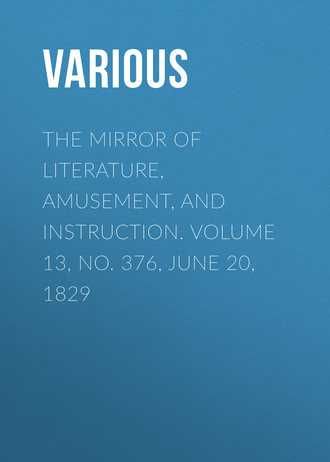The Mirror of Literature, Amusement, and Instruction. Volume 13, No. 376, June 20, 1829
 полная версия
полная версияThe Mirror of Literature, Amusement, and Instruction. Volume 13, No. 376, June 20, 1829
Жанр: учебная и научная литературазарубежная старинная литературазарубежная образовательная литератураразвлечениязнания и навыки
Язык: Английский
Год издания: 2018
Добавлена:
Настройки чтения
Размер шрифта
Высота строк
Поля









